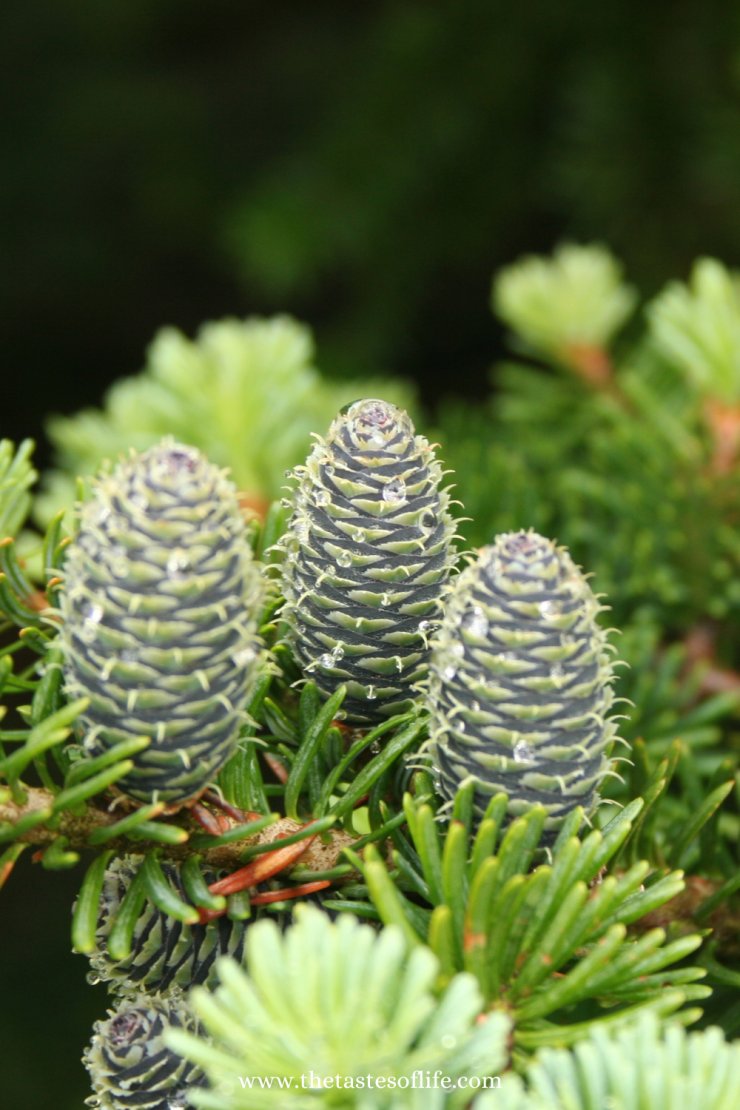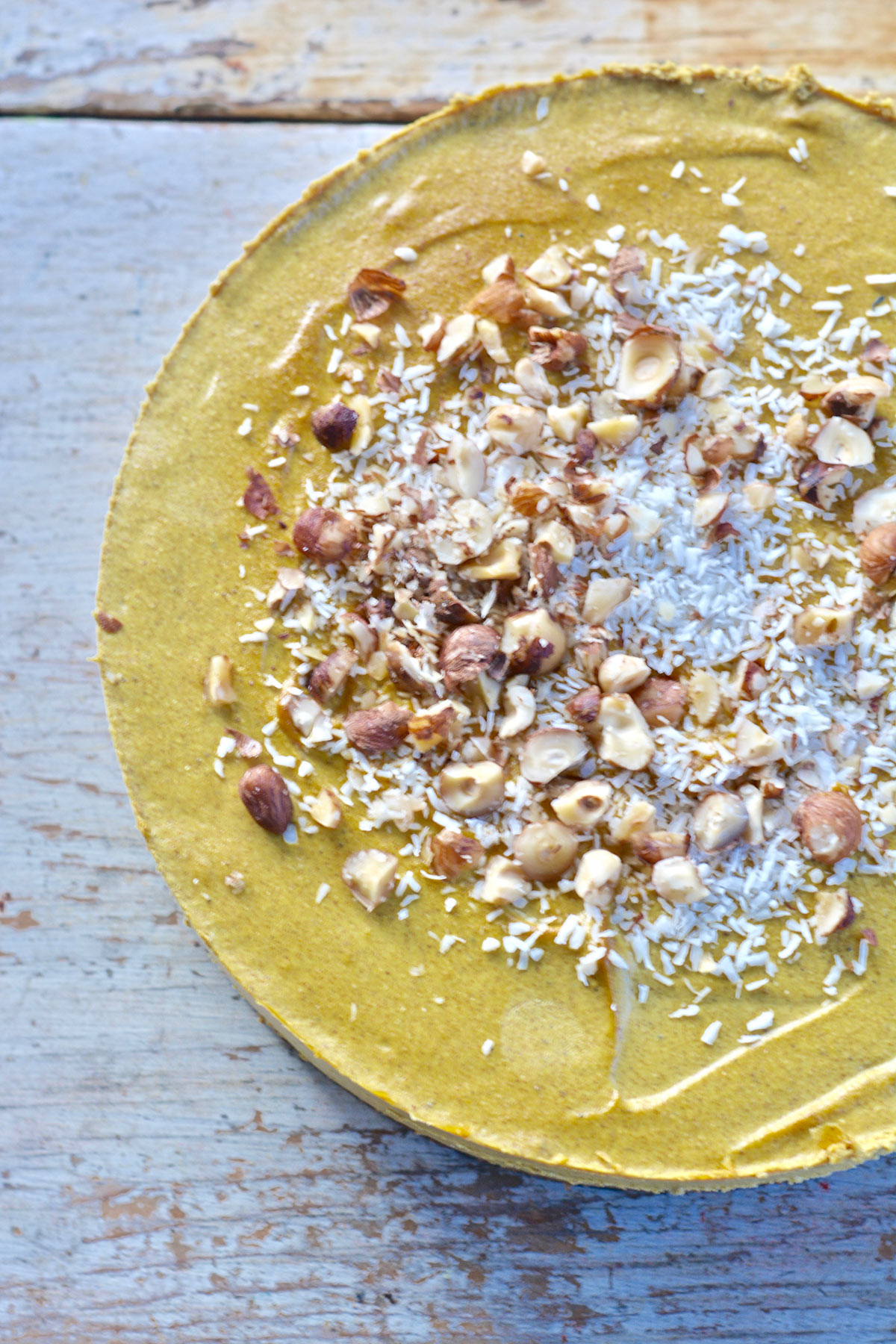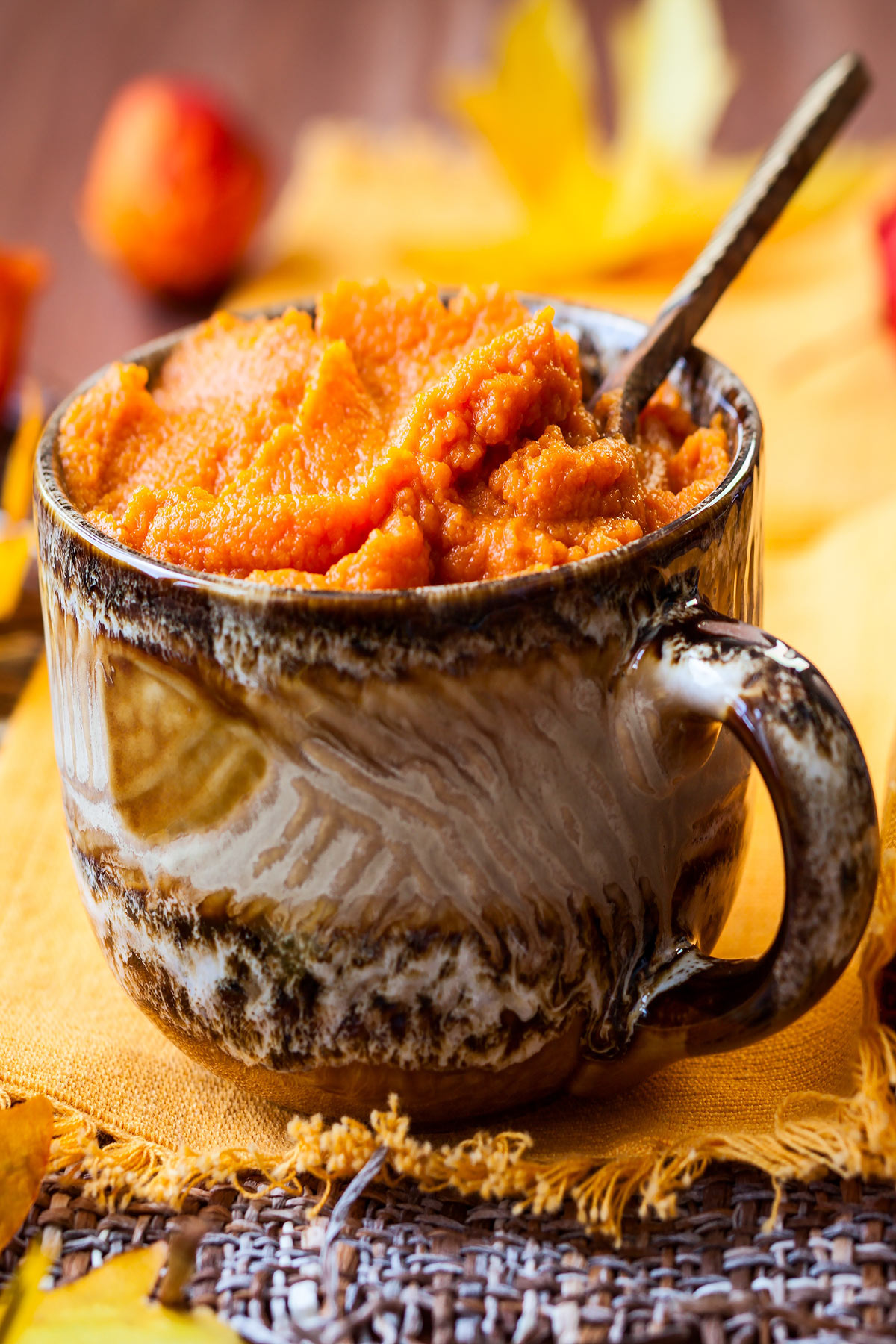What To Forage In Winter: Winter Guide to Edible Plants
Discover what to forage during winter months. From wild berries and evergreen trees to hearty herbs and mushrooms, explore the diverse array of edible and medicinal resources waiting to be found in the country’s forests and coastlines. Learn how to forage responsibly and sustainably while connecting with nature’s bounty during the cold months.

What to Forage During Winter Season
As the winter chill settles in and the winter landscape transforms into a frosty wonderland, the notion of foraging might seem reserved for warmer months. However, winter presents its own bounty waiting to be discovered and harnessed for those attuned to nature’s rhythms.
Foraging is one of the best memories I have of my childhood. Our family used to forage quite often, and we always came back with baskets full of forest goodies. Foraging is a strong tradition in Poland, where I come from. Throughout history, foraging has played a significant role in Polish people’s lives, providing sustenance and cultural and social connections to the land and medicinal uses. We Poles love to go to the forest and pick up all sorts of fruits, nuts, and plants.
Mushroom Foraging: Mushroom foraging is perhaps one of the most cherished foraging traditions in Poland. Known as “grzybobranie,” it always brings families and friends together to explore forests in search of edible fungi. Poles have a deep knowledge of mushroom species, passed down through generations from a very early age.
Berry Picking: Berry picking is another cherished foraging tradition in Poland, especially in rural areas where forests and meadows abound. They grow wild everywhere and families often venture on berry-picking excursions during summer, gathering wild strawberries, raspberries, blueberries, and blackberries. Additionally, cranberry picking in the wetlands of northern Poland is a seasonal tradition that provides a valuable source of tart berries for culinary and medicinal purposes.
Herb Gathering: Wild herb gathering is deeply ingrained in Polish folk medicine and culinary traditions. Poles have relied on wild herbs for their medicinal properties and culinary flavorings for centuries. Common herbs like nettle (which grows everywhere), wild garlic, yarrow, and chamomile are harvested from meadows and forests and used in teas, soups, and traditional dishes. Additionally, herbs like St. John’s wort and elderflower are collected for their therapeutic benefits, believed to alleviate various ailments and promote well-being.
Fruit Foraging: Beyond berries, Poles also forage for wild fruits such as apples, plums, cherries, and pears. Orchards and hedgerows yield abundant fruit in the late summer and early autumn, providing opportunities for families to gather and preserve nature’s bounty. Homemade fruit preserves, compotes, and liqueurs are popular ways to enjoy and preserve these wild fruits throughout the year.
Foraging in Poland is deeply rooted in cultural heritage and a profound connection to the land. From mushroom hunting in the forests to berry picking in meadows and hedgerows, foraging is a practical way to obtain food and a cherished social and cultural tradition that fosters a deep appreciation for nature’s bounty. So, after moving to the US, I took those traditions with me.

Foraging in The Winter Season?
What to forage during the winter, you may ask? Foraging during the winter months may seem daunting at first glance, but with a keen eye and a bit of knowledge, there are lots of options for wild plants to be discovered, even in the coldest of seasons. In this guide, we’ll delve into the diverse array of edible and medicinal plants and fungi that can be foraged during the winter, ranging from hearty greens and berries to tree sap and seaweed.
Winter foraging for sure presents unique challenges and rewards, particularly in colder climates where the landscape is. Despite the harsh conditions, certain plants and fungi persist, providing sustenance and medicine for those who know where to look. Whether you’re exploring forests, fields, or coastal regions, there’s a wealth of forageable delights awaiting discovery.

What To Forage During Winter Months?
Evergreen trees, for me, are such a treasure and wonderful medicinal trees.
Trees: Evergreen Essentials
Trees are brave providers of sustenance in winter, offering a bounty of needles, cones, bark, and sap. Conifer needles, such as those from pine, spruce, and fir trees, are versatile ingredients for teas, infusions, and culinary creations. Juniper berries add a unique flavor to dishes and can even be used to make homemade gin. Birch bark and branches can be brewed into a soothing tea, while maple trees yield sap that can be transformed into syrup or fermented into wine. My favorite is pine needle tea with lemon slices.
Nuts & Seeds: Nature’s Treasures
Nuts and seeds offer nourishment throughout the winter months, with acorns providing a source of sustenance for foragers willing to process them. Though dried by winter’s chill, maple tree seeds can still be foraged for their potential culinary uses. Black walnuts can be foraged, dock seeds harvested from curly dock or yellow dock plants, and offer a versatile flour substitute for baking.
Berries: Winter Jewels
Though fewer in number, certain berries endure the winter cold, offering bursts of flavor and nutrition. Rose hips, rich in vitamin C, persist through snow and ice, lending themselves to teas, jellies, and syrups. Hawthorn berries, known for their pectin content, are ideal for making jams and jellies. Juniper berries are best foraged in the winter for their nutritional value. Wild cranberries, prized for their tartness, withstand freezes and can be used in various culinary creations.
Leaves & Flowers: Hardy Greens
Even in the depths of winter, certain evergreen leaves and cold-hardy greens persist, offering both flavor and nutrition. Uva Ursi, with its medicinal properties, thrives beneath the snow while watercress flourishes in cold, clear streams. Early spring greens and flowers like dandelion, chickweed, and yarrow provide fresh options in milder climates.
Roots & Shoots: Beneath the Surface
Roots and shoots offer hidden treasures, provided the ground isn’t frozen solid. Oregon grape, prized for its medicinal bark and stems, provides immune-boosting benefits. Cattails yield edible roots in late winter, while burdock offers tasty, nutritious roots for those willing to dig. Dandelion root and burdock root are great for a pickup.
Mushrooms: Fungal Finds
Despite the cold, certain mushrooms persist through the winter, offering both culinary delights and medicinal benefits. Yellowfoot chanterelles, also known as winter chanterelles, can be found beneath the snowline, while oyster mushrooms thrive on downed logs. With its potent medicinal properties, Chaga fungus grows slowly on birch trees, while turkey tail mushrooms offer immune-boosting benefits.
Seaweed: Coastal Cuisine
Seaweed provides a nutritious and abundant source of forageable food year-round for those near coastal regions. Dulse, with its reddish hue and salty flavor, is a common and tasty option, while kelp varieties such as sugar kelp and forest kelp offer mineral-rich additions to soups and stews.
Wild Greens & Burdock Roots: Great Finds
Certain leafy greens, such as chickweed, dandelion, wild garlic, and wintercress, can often be found growing throughout the winter in sheltered areas or beneath the snow cover.

What Evergreen to Forage?
Using evergreens in food and teas can add unique flavors and beneficial properties to your culinary creations. Here are some common evergreens that you can use in your cooking, teas, and more:

Pine (Pinus spp.): Pine trees offer a variety of culinary uses. The young, tender tips of pine needles can infuse teas with a refreshing, citrusy flavor. They are also commonly used to flavor syrups, vinegar, and even desserts like pine needle shortbread cookies. Additionally, pine nuts harvested from certain pine species are a delicious and nutritious addition to salads, pesto, and other dishes.

Spruce (Picea spp.): Like pine, spruce trees provide edible needles for teas and culinary creations. Spruce tips impart a bright, citrus-like flavor to dishes and are often used to infuse syrups, liqueurs, and vinegar. They can also be candied or used to flavor baked goods.

Fir (Abies spp.): Fir trees offer aromatic needles for teas and culinary applications. Like pine and spruce, fir tips can add a citrusy flavor to dishes and beverages. They are commonly used in teas, syrups, and infused oils.

Cedar (Cedrus spp.): Cedar trees provide fragrant leaves and wood that can be used to infuse flavor into food and beverages. Cedar leaves can infuse teas with a subtle, woodsy aroma, while cedar wood planks are often used to smoke and flavor foods like salmon and other meats.

Juniper (Juniperus spp.): Juniper berries are actually small cones and are commonly used as a spice in cooking and flavoring gin. One of my favorite spices. They have a distinctively piney, slightly citrusy flavor and are often used to season meats, sauces, and pickles. Juniper berries can also be used to make teas and herbal remedies.
When foraging for evergreens to use in your food and teas, it’s essential to correctly identify the species and ensure they are safe for consumption. Additionally, harvesting from areas free of pollution and avoiding overharvesting is advisable to sustain healthy ecosystems.

Herbs to Forage During Winter
Wild herbs can be found in various habitats, including forests, fields, meadows, and even urban environments. While some wild herbs may go dormant or become less abundant during the winter months, several species can still be foraged even in colder climates. Here are some examples of wild herbs that can be foraged in the winter:
Chickweed (Stellaria media): Chickweed is a common herbaceous plant that thrives in cool, damp environments. It has tender, succulent leaves and small white flowers. Chickweed can often grow in patches on the forest floor, along trails, or in open fields. It is edible and can be used fresh in salads or cooked as a green vegetable.
Dandelion (Taraxacum officinale): Dandelion is a resilient herbaceous plant with toothed leaves and bright yellow flowers. While most people consider it a weed, dandelion is a nutritious edible plant. The leaves can be harvested throughout the winter and used fresh in salads or cooked as greens. Dandelion roots can also be harvested and roasted to make a coffee substitute.
Nettle (Urtica spp.): Despite its sting, nettle is a highly nutritious herb that can be foraged in the winter. Its young shoots and leaves can be harvested before they flower and used in soups, stews, teas, or steamed as a nutritious green vegetable. Nettle often grows in moist, fertile soil along riverbanks, woodlands, or disturbed areas.
Wild Garlic (Allium ursinum): Wild garlic, also known as ramsons, is a wild relative of cultivated garlic. It has broad, lance-shaped leaves and clusters of white flowers. Wild garlic grows in shaded woodland areas and moist, damp soils. The leaves have a pungent garlic flavor and can be used fresh in salads, soups, pesto, or cooked as a flavorful green vegetable.
Wintercress (Barbarea vulgaris): Wintercress is a cold-hardy herbaceous plant from the mustard family. It has lobed leaves and clusters of yellow flowers. Wintercress can often grow in moist, shady areas like woodland edges or along streams. The leaves taste slightly bitter and can be used fresh in salads or cooked as greens.
Ground Ivy (Glechoma hederacea): Ground ivy is a low-growing perennial herb with rounded, scalloped leaves and small purple flowers. It thrives in shady, damp habitats, such as woodlands, hedgerows, or along stream banks. Ground ivy has a mild minty flavor and can be used fresh in salads, garnish, or tea.
Rose Hips are a fantastic wild food to forage, especially in the winter when they are ripe, and can provide a burst of flavor and nutrition. Rose hips are the fruit of the rose plant and are typically bright red to orange in color, resembling small berries. They are an excellent source of Vitamin C during the winter.
When foraging for wild herbs in the winter, it’s essential to properly identify the plants and ensure they are safe for consumption. Be cautious of potential look-alike species and avoid harvesting from polluted or contaminated areas.

How do you find food in the wild in the winter?
Finding food in the wild during the winter can be more challenging than in other seasons due to colder temperatures, snow cover, and fewer available resources. However, with the right knowledge and techniques, foraging for food in winter conditions is still possible. Here are some tips for finding food in the wild during the winter:
Research and Preparation: Before heading out to forage, research the types of edible plants, fungi, and other food sources that are available in your area during the winter months. Familiarize yourself with their appearance, habitat, and any seasonal variations in their availability.
Look for Evergreen Plants: Evergreen plants, such as pine, spruce, and fir trees, retain their foliage year-round and can provide valuable resources for foraging in the winter. Look for pine needles, which can be brewed into tea or infused into dishes, as well as pine cones, which may contain edible seeds.
Search for Berries and Nuts: While many berry bushes may be dormant in the winter, some species, such as rose hips, hawthorn berries, and cranberries, can still be found clinging to the branches. Additionally, look for nuts such as acorns or seeds like those from pine cones, which may provide a valuable food source.
Explore Sheltered Areas: Sheltered areas, such as the bases of cliffs, under overhanging rocks, or beneath dense tree canopies, may offer protection from harsh winter conditions and provide a more hospitable environment for forageable plants and fungi.
Follow Animal Tracks: Animals are adept at finding food in the wild, so following their tracks can lead you to potential foraging spots. Look for signs of animal activity, such as tracks, droppings, or gnawed vegetation, and investigate these areas for edible plants or fungi.
Scout Near Water Sources: Water sources, such as rivers, streams, or lakes, may remain unfrozen or have areas of open water during the winter months. These areas can attract wildlife and provide a more diverse range of forageable resources, including aquatic plants, fish, and amphibians.
Be Observant: Pay close attention to your surroundings and be on the lookout for any signs of potential food sources. Look for edible plants, fungi, or other natural materials useful for foraging or survival.
Utilize Field Guides and Apps: Bring field guides or use foraging apps on your smartphone to help identify edible plants, fungi, and other wild foods. These resources can provide valuable information on species identification, habitat, and potential uses.
Exercise Caution and Respect: Always exercise caution when foraging in the wild, especially during the winter when conditions can be harsh and potentially dangerous. Respect the environment and wildlife, and only harvest what you need, leaving enough resources for other foragers and local ecosystems to thrive.
Combining these strategies with careful observation and knowledge of local ecosystems can increase your chances of finding food and knowing of what to forage during the winter. Remember to forage responsibly and safely, and enjoy the experience of connecting with nature even in the coldest seasons.

Benefits of Winter Foraging: Embracing Nature’s Resilience
Engaging in winter foraging isn’t just about reaping the tangible rewards of nature’s bounty; it’s also a transformative experience that nourishes the mind, body, and soul. Here are some of the benefits of winter foraging:
Connection to the Seasons: Foraging in winter fosters a deeper connection to the seasonal cycles of nature. By immersing ourselves in the natural world’s rhythms, we gain a greater appreciation for its resilience and beauty.
Physical Activity: Winter foraging often involves outdoor exploration and physical activity, providing an opportunity to stay active and maintain fitness during the colder months. Whether trekking through snow-covered fields or foraging in wooded areas, it’s a chance to embrace the invigorating freshness of the winter air.
Nutritional Diversity: Incorporating wild edibles into our diet introduces a level of nutritional diversity often lacking in conventional food sources. Winter foraged foods are rich in vitamins, minerals, and antioxidants, helping to bolster our immune systems and support overall health during the cold season.
Mindful Practice: Foraging requires a certain level of mindfulness and attentiveness to the natural world. By honing our observation skills and learning to identify different plant species, we cultivate a sense of presence and awareness that carries over into other aspects of our lives.
Hopefully, you learn by now what to forage during winter months and you will explore your forest nearby😊
Late winter can get a little rough, and it’s not at all uncommon to experience symptoms of Seasonal Affective Disorder (SAD) this time of year. Many folks experience milder versions, like the winter blues or cabin fever, even if you don’t feel full-on SAD.
Fortunately, you can make simple lifestyle adjustments to ease your symptoms
naturally. Light therapy, vitamin D, and gentle exercise all help. You can also call upon herbal allies like St. John’s wort, mimosa, and lemon balm to gently lift your spirits.
As a self-proclaimed plant nerd, I like to combat cabin fever with a winter foraging
adventure, since it gives me some much-needed exercise and a gentle boost of vitamin D – both of which help ease winter blues. There’s plenty of foraging to be done even in the midst of winter, and I have a beautifully illustrated Evergreen Foraging Guide courtesy of my friends at the Herbal Academy that you can download below to help you identify some evergreens that are used in herbalism on your walk. It’s so much fun to learn which evergreens grow near you, and
how to use them in homemade teas, syrups, oils, and more!
HERBAL ACADEMY’S CABIN FEVER FORAGING BUNDLE
SALE RUNS FEBRUARY 15 – 26
DOWNLOAD THE EVERGREEN FORAGING GUIDE

Do you want to learn more about foraging?
The Herbal Academy just released a really neat Cabin Fever Foraging Bundle that combines two of their most popular online foraging courses with 3 free bonuses, including a live Q&A session and a recipe-packed ebook, both of which address herbs and lifestyle shifts for Seasonal Affective Disorder (SAD).
Winter Teas:
Yum





